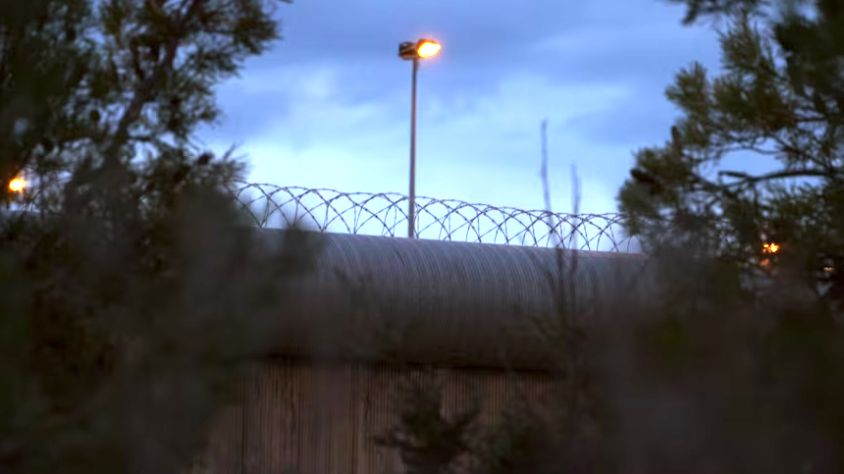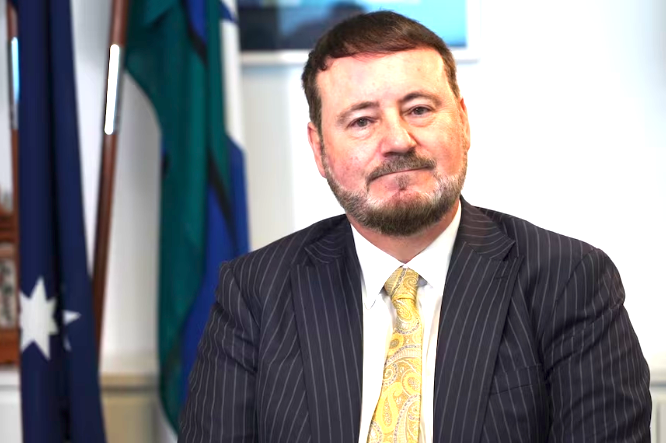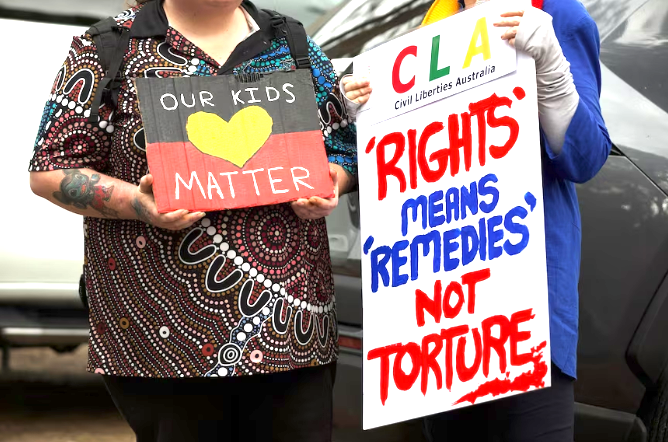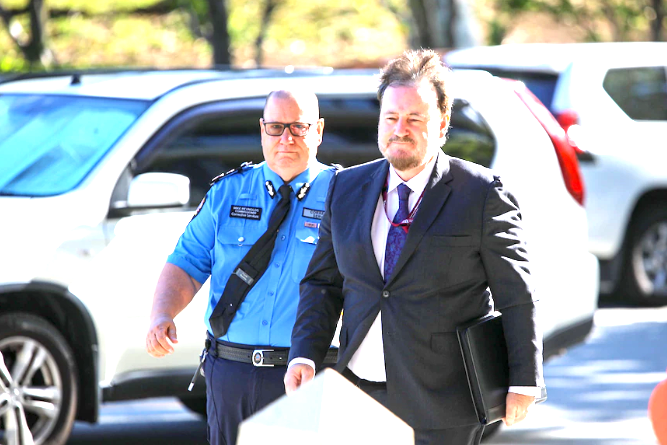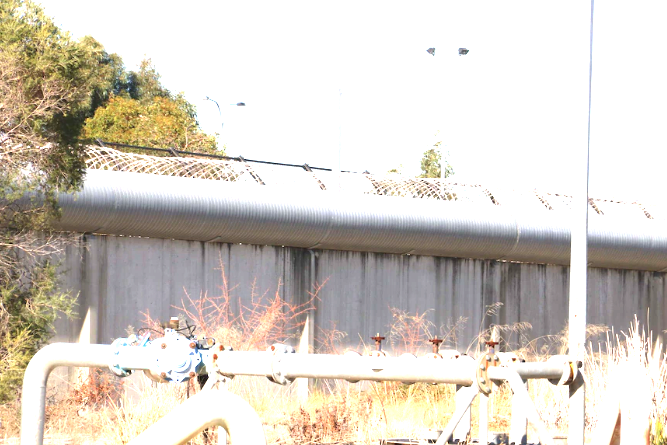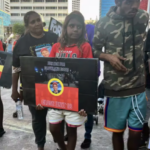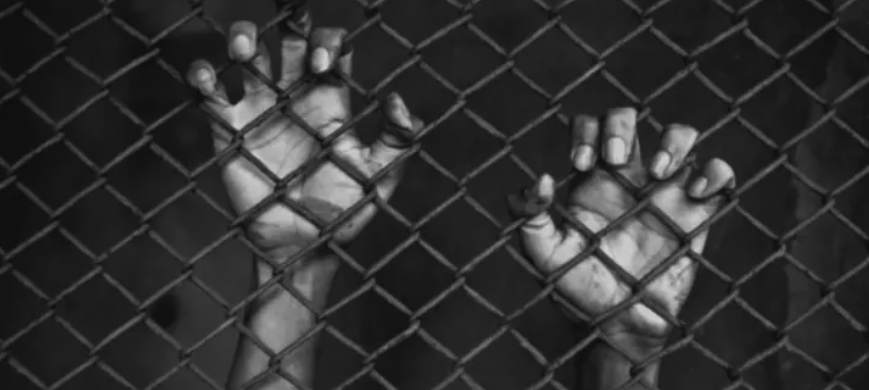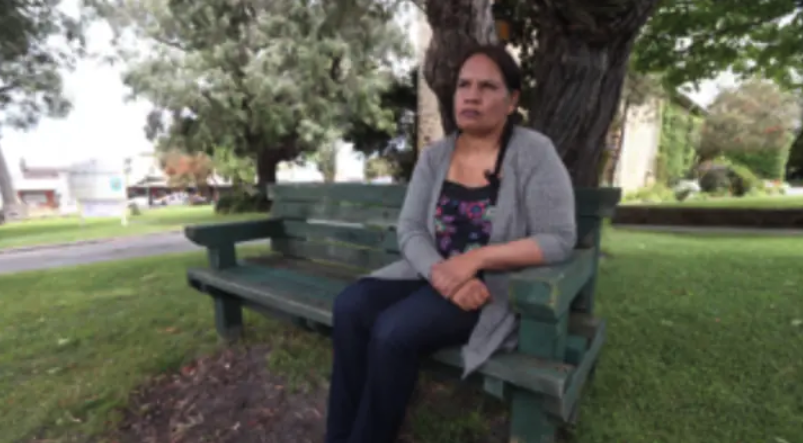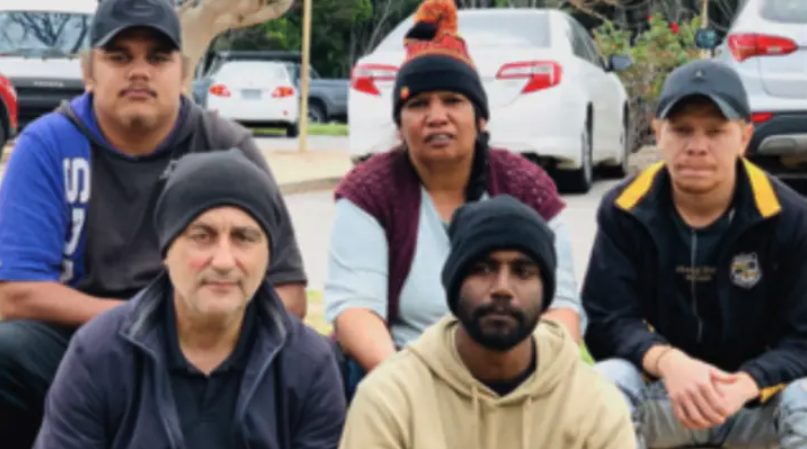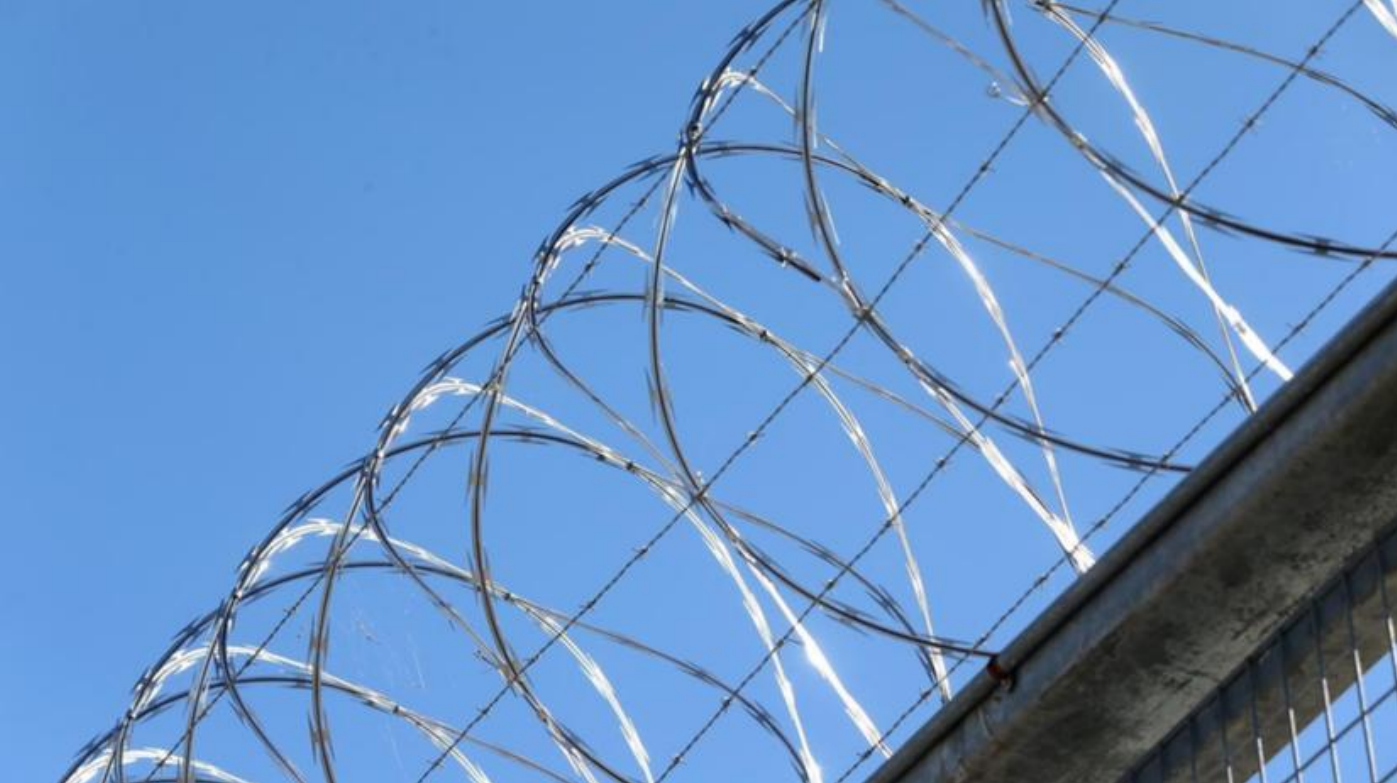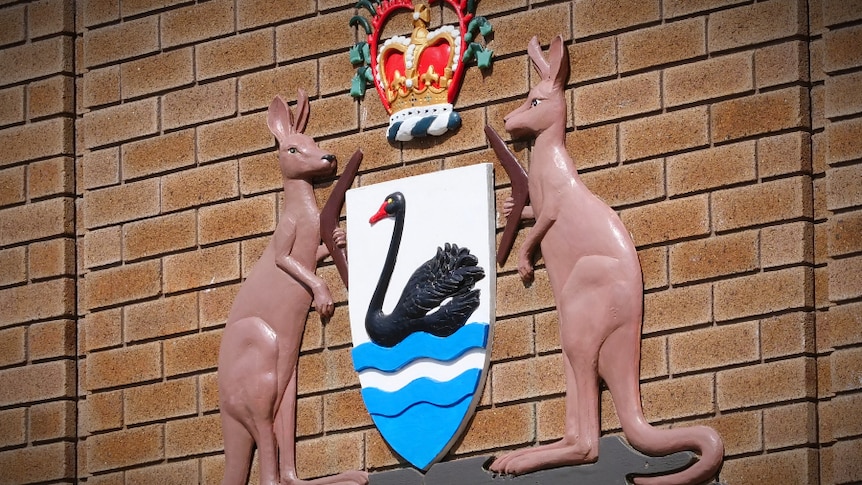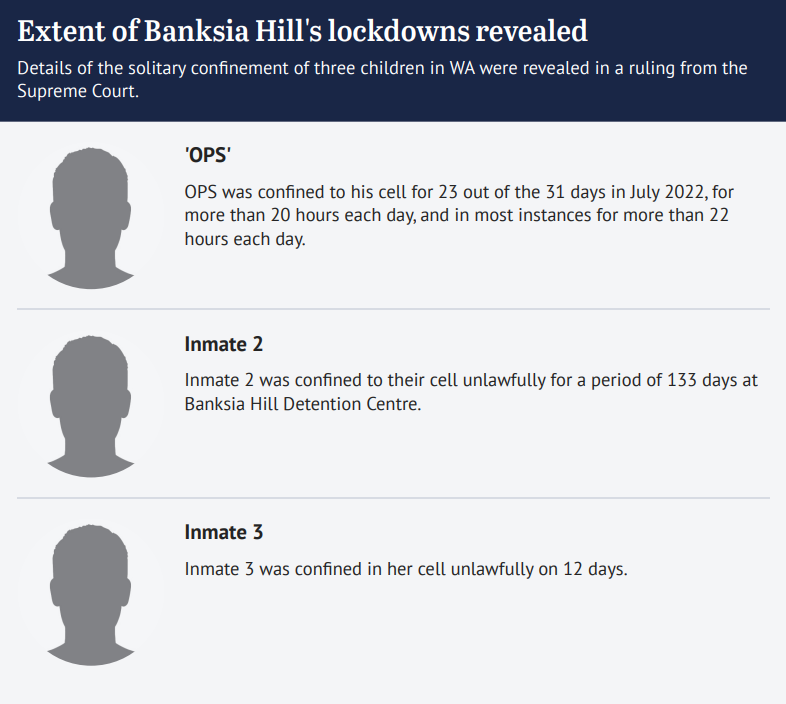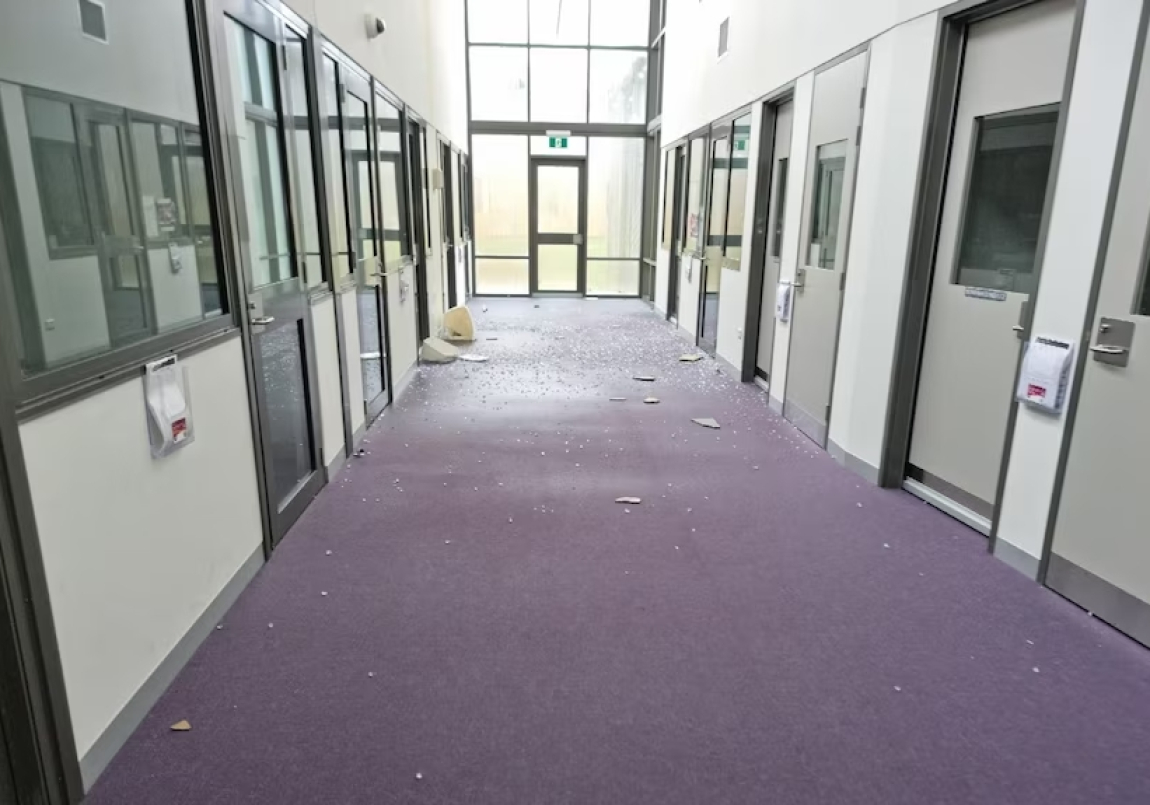THERE ARE 17 children’s prisons littered throughout the Australian continent. Nearly 70% of children incarcerated serve gaol time as adults. There are two children’s gaols in the Northern Territory — one in Alice Springs, the other is Don Dale in Darwin.
Don Dale became notoriously infamous when the nation was shown CCTV footage of guards punching children, throwing them across concrete rooms and smashing into them. It led to a Royal Commission but there was no culmination to effective changes that could turn around lives.
Don Dale is not alone. The only child prison in Western Australia remains the longest ongoing riots-ridden crisis, not just of all Australia’s 17 children’s gaols but of all child prisons in the world. It has been a decade and a half of rooftop riots, recurring takeovers of the prison by protesting children and showdowns between the children and the guards.
There is no other comparison between the crisis that is Banksia Hill to any other child prison in the world.
Children’s prisons throughout Australia, from Cleveland to Don Dale, to Ashley to Banksia Hill miserably fail Australia’s most vulnerable and marginalised children — many who never had a chance from the beginning of life.
The children are demonised and vilified by governments, by far too many in society, as the nation remains resistant to restorative works. It refuses to invest in turning young lives around, refuses to admit the need for community reckoning and heads us to the majorly compassionless, punishing beyond penance to hovelling children in abysmal conditions and ever-worsening deprivations till they can gaol them as adults for longer periods in adult prisons.
Western Australia has the nation’s harshest sentencing regime, the most punishing, with mandatory sentencing on a suite of offences that no other state or territory would countenance. Some sentencing regimes collapse into effective indefinite detention. Post-sentence supervision orders can be so harsh that returning to gaol is guaranteed because of parole breaches. Western Australia is the nation’s mother of gaolers and harsher on aberrant children than any other Australian jurisdiction.
The campaigns to shine a light on the need for the urgent salvation, healing and redemption of Australia’s most disadvantaged children have been a relentless slog. It is humanity awry and afar. I have campaigned for the children of Banksia Hill for a decade and a half. Not only for the children of Banksia Hill but for an end to Australia’s 17 children’s prisons, which are more than a gateway, if not a turnstile, to adult prisons.
What should be highlighted?
I have campaigned for comparative minor reforms such as Medicare in children’s prisons, in all of this nation’s 115 prisons. If we cannot secure a minor reform of Medicare to child prisoners, then what hope for the more substantive reforms that can underwrite the transformational? The only Australians denied Medicare are the nation’s incarcerated, including ten-year-old child prisoners. This is an abomination. This reprehensibility culminates in most of the children and adults leaving prisons in a worse state of health.
But I am not just a campaigner and advocate, I am a deliverer of changed lives, having worked, funded and unfunded, remunerated and as a volunteer with children pre-release, post-release and with children diverted to alternate settings to incarceration. I have turned around many lives. I am not just a commentator or critic but someone who has worked with thousands. I want to focus on the ways forwards. Narratives need to change.
In the meantime, the Levitt and Robinson Lawyers Class Action against Banksia Hill and the Western Australian Government, which I helped galvanise, is journeying through the Federal Court. It represents thus far more than 700 plaintiffs and by the time it culminates, more than likely by the end of next year with thousands of plaintiffs, hopefully at least 3,000.
Banksia Hill crises and the relentless failing of children by the state have become a sore point for the Western Australian Government these last three years, a brutal public spectacle that has scolded more scars on the Government than any other issue. The West Australian newspaper has been relentless in holding the State Government to account these last three years. The ABC continues taking the crisis to the nation and the National Indigenous Times keeps on calling for change.
All the media has had enough of the compassionless rhetoric by the State Government and the inactions of the Federal Government to take a stand on behalf of the children of Banksia who for now they are leaving behind.
I cannot emphasise enough the failure that Banksia Hill as a rehabilitative setting as it was touted when opened in 1997. At least 80% of children aged 10 to 16 who are hovelled into Banksia Hill will return at least once, many of them dozens of times. This statistical narrative has been the story of Banksia Hill for more than a quarter of a century, effectively since its establishment. Claims that any part of Banksia Hill as a success story in the face of this chronically acute statistic are shameful stonewalling and gaslighting. It is a wicked sin.
In that same period of a quarter of a century, there have been evidenced transformations, culminating in changed lives and the radical reduction of reoffending, particularly in northern Europe, but Australian governments – federal, state and territory – turn a blind eye. These are children.
What are the ways forward?
In March 2020, during the height of the COVID pandemic in Australia, Western Australia’s borders were closed and monitored. Nearly all Western Australian residents were quarantined in their homes. This lasted for eight weeks till late May. Only essential workers were allowed to move around. I was one of those workers during the quarantine.
In late March 2020, on the first day of the quarantine, I was summoned to Banksia Hill with colleague Megan Krakouer. I was called in by the then commissioners of the Department of Corrective Services, Tony Hassall, Cheryl Clay and Kymberley McKay.
The staffing levels to the crisis-ridden Banksia Hill were at their record lowest, with non-essential workers quarantined to their homes and all external services pulling out all their staff. The management of Banksia Hill was awry with hysteria as to how to deal with the protests, the dissent and the breakouts from cells of the children.
I had spent years pleading to one government after another to let people like me help turn around the lives of the children. I had been – and still am – seen as a bleeding-heart radical. Despite my record of turning around the lives of some of the most disadvantaged children and youth, my chronic outspokenness for understandings of compassion was held against me.
I proudly admit I am a radical bleeding heart and I never give up on turning around lives. As you would want with your children. Not all the qualifications in the world can match the seasoned expertise of compassion and of believing in people, whether children or older, till they believe in themselves.
Summarily, in those eight weeks in Banksia Hill, till our last day on 22 May, I and Megan de-escalated every potential incident we came across or that we were called upon to de-escalate. During those eight weeks, there were no protests or breakouts from cells and compounds, no rooftop riots, and no clashes between disgruntled and stir-crazy children and the guards.
I must reiterate that the staffing levels at Banksia Hill were at the record lowest during those eight weeks. Therefore, it is also a false narrative to argue for more guards. This lie is dangerous and compounds and entrenches failure and trauma. You only need more guards if you intend a harsher punitive narrative and intend to regularly lock the children in their cells most of the day and guarantee stir-craziness.
Corralling children in their cells leads to their crying out and eventually culminates in rebellion. This practice of what is argued as indefinite confinement in a cell is unlawful and has been ruled so by the Supreme Court of Western Australia — and its ongoing practice is potentially contempt of court.
During those eight weeks at Banksia Hill, I helped more than halve the prisoner population of the girls. Children aged 11 to 17. There were 18 girls incarcerated in Banksia Hill on our first day and on our last day, there were seven. During the eight-week period, there was a turnover of 31 female prisoners. We worked with the majority. We had taken it upon ourselves to work beyond our remit with Banksia Hill child detainees, in that we were asked to de-escalate incidents and just “engage” children.
We wanted to make a difference, to demonstrate the long overdue restorative ways forward, to make sure that most of the children we assisted did not re-offend and went on to supported productive lives. Our team was only three-strong — Megan, me and my daughter, Connie Georgatos. We pursued identity documents, public housing applications, Centrelink applications, Medicare assistance and educational pathway assists. Connie addressed issues we believe should have been addressed while the children were in Banksia Hill. Too many came out with none of these rudimentary fundaments.
I surprised Banksia Hill management by demanding that we would work with the children, not from an office in the administration building with scheduled visits. I won the right to work with the children in their compounds for as long as needed, with guards at a distance. We demanded access to the containment unit known as the Intensive Support Unit or as known by the detainees, the “cage”.
We unpacked stories, because we spent hours day after day with the children, listening to the children without interruption. We were age content-sensitive, contextualised and cared. We crafted support post-release. We did the never-before and supported their families and carers on the outside and when the children were released.
The substantive supports on the outside do not exist. The diversionary programs on the outside are not 24/7 and what little exists cannot meet the needs of the majority of the children.
Many children who finish up in Banksia Hill are homeless, some street-present homeless, transient and housing insecure, and have no safety nets. They need housing security and assisted living. I have highlighted orphans being failed, of a 12-year-old orphan who was street-homeless, incarcerated 12 times in Banksia Hill. He is now nearly 16 years of age and incarcerated in Banksia Hill more than 20 times.
A couple of years ago, his 15-year-old brother, who had also had spells in Banksia Hill, was living a form of homelessness – overcrowding – with more than a dozen others, itinerant in a small social housing dwelling. He is one of more than a hundred Banksia Hill children over the last two decades who are deaths after custody, mostly by suicide as he was and others to substance misuse. They lived on the run from unaddressed traumas, unsupported, each day as if their last.
These two orphans were two among eight siblings. I have often referred to them. Four would finish in juvenile detention facilities across two states, with three at Banksia Hill. One of them, now 20 years old, I have supported since he walked into my then office four years ago. He and his partner, and a brother, walked into my then office off the streets, out of pavement sleeping homelessness. They were exhausted and dishevelled. They were dog-tired, on the run and would have finished up soon locked up for a meal, shower and bed.
How do we fail homeless orphans? This haunts me to this day. I have supported the 20-year-old and his partner since then. He has never re-offended. Without me, he would have become one of the 70% who go onto adult gaols post-juvenile detention. I put him through an employment training program and drove him to training every day, along with his young uncle, who also graduated from the program and has been working ever since.
I have driven quite a few former Banksia Hill detainees to the training programs I sponsored them to complete. With his tickets and qualifications, he has worked in traffic control and construction sites. He is now completing an electrical trades apprenticeship. I secured him housing and helped furnish his home. I visit him and his partner every month. They have a baby and are thriving. All they needed was “someone”.
Back to those eight weeks in Banksia Hill, I applied to the Children’s Court for the release of many of the female detainees. Some had committed reprehensible crimes and dangerous actions, the majority more banal offending. Banksia Hill management was surprised that I secured the release of the children. It was on a release and support basis, which we provided to the children to whom we committed ourselves, even post-release which we were not funded to provide. The then commissioners of the Department of Corrective Services were ecstatic. Commissioner Tony Hassall went into the media extolling our work as “unique” and successful.
We showed restorative works, if given the latitude needed, to turn around even the most troubled lives. At first, it made me sad to reflect that the commissioners considered the completion of parole a success.
One child we supported had never successfully completed parole. She was returned to Banksia Hill on four occasions after breaching parole. On her fifth attempt, after her last stretch, a year inside and our first attempt with her, she completed parole. We supported her for nearly two years unfunded. After the eight weeks, we secured her a home, training to employment and were there during stressful times. She had no safety net. We became it.
We were to be funded further but were not because of the class action we helped galvanise. That is a sad indictment of the State Government getting in the way of funding procurement of a successful nurturing program. The Department of Corrective Services offered us 15 months of funding not long after the eight weeks of service but because we brought on the class action to compel wider social reforms by an unresponsive government, we were told by the commissioners “those above them” wanted us out of Banksia Hill and all the state’s prisons.
We delivered some nine months of record-breaking work in West Australia’s largest prison, Acacia, where nearly one in four of all the state’s prisoners are incarcerated. We reduced the self-harms and attempted suicides among First Nations prisoners to record lows. We changed lives, First Nations and non-First Nations. Those nine months were another period of calm like our eight weeks in Banksia Hill. Since our departure from Acacia Prison on 25 June 2021, Acacia has returned to being crises-ridden, as is the constant fundament of most of Western Australian prisons.
What more on the ways forward
Early last year, I paid for the training to various qualifications of five former Banksia Hill children — three First Nations and two non-First Nations. I changed some lives with positive pathways. Two of them I drove every morning to training. All had tragic stories. One had been the street homeless orphan I mentioned earlier. He is now an electrical tradie apprentice.
I am these days retired, due to living with Parkinson’s Disease but remain a volunteer mentor and do what I can from my small-time charity, The Georgatos Foundation which Levitt and Robinson Lawyers manage, with the firm’s legendary principal lawyer, Stewart Levitt, as the chair of the board.
In recent times, I have worked quietly with eight Kimberley youths and two other Western Australian youths, most of who had been in and out of Banksia Hill and had been labelled as dangerous recidivists. Of the ten, eight are First Nations, two non-First Nations.
I thank Coles for taking on some of these children while I mentored them and got them some qualifications. Coles employed them in various roles and they turned up each day, habituating positives and protective factors. This was vital to grounding the ways forward and securing them with subsequent employment in trades, FIFO and apprenticeships. It takes a village.
People need people. Children and youth need nurture. They need believers.
In one of my fast-approaching final acts, I paid for the youths’ training in various trade qualifications through various providers. I mentored daily till they no longer needed me. This should have been the Banksia Hill story all along.
We need to right wrongs. I cannot emphasise this enough. I have seen first-hand these children living each day as if it’s their last. So, I have been compelled to respond with a sense of urgency, advocate and campaign on their behalf as if each is my last, supporting them to turn their lives around with uninterrupted urgency. I see this as a crusade because they have nowhere else to turn.
I am now volunteering as a mentor to nearly 40 former Banksia Hill children. Since having been in their lives, the near-all have not returned to Banksia Hill or to adult prison. I also mentor some of the children who are paroled. It’s about being there for them. They want hope. They do not want to live incarcerated.
With most of them, every month I do the in-person stop to those of the 40-odd I have helped over the last couple of years. I bring groceries or grocery vouchers I have paid for. We’ve got to give where can.
We “talk life”. Most of them had been gaoled as children more than once, some numerous times. School-age children sitting in gaols, some as primary school-aged children.
I’ve helped some of them to public housing tenancies, shared accommodation — a room of their own or a humble private tenancy. I’ve helped some with counselling, stabilisations, training programs, employment and education.
I remind them that their families, however downtrodden some of them are, are in their corner, even if it’s not spoken. I remind them their families, no matter even if estranged, look up to them.
Their beliefs determine their “ground”, solid ground. Without nurture, without validation, they are forgotten. The children in Banksia Hill, when demonised and vilified by governments, are slagged into forgotten children.
I can’t argue enough that people need people. This has been the bedrock of my support – which I never time-limit – and rather make outcomes relevant. This is my rule with everyone I have supported over nearly a half-century — people leaving prison, the homeless, impoverished migrants and people from acutely disadvantaged backgrounds.
So, my motto is to believe in people until they believe in themselves. We’ve got to approach everyone, particularly a child, with love and kindness. Everyone is entitled to redemption, and undeniably a child. Fifty years of supporting people has taught me this — in my experience, this premise is irrefutable, immutable. To stray from it is beyond risky. I focus on facts, statistics and evidence.
Of the 40 post-Banksia children, nearly a third are employed, several are studying towards a tertiary qualification and most have not been incarcerated again. As children, before I met them, many had been caged in the “Intensive Support Unit” — a concrete floor dark space.
I hope the class action led by Steward Levitt and his daughter, Dana Levitt, is successful, leading to changes and compelling social reforms.
Parkinson’s Disease is deteriorating me, physically and cognitively. Whatever drops of energy are left of me, they go to these left-behind, held-back children. If we can get the support right for the children, we can then get it right for the youth and older filling adult prisons.
We need nurture on tap, seasoned expertise in mentoring, big brother and big sister mentoring. We need psychosocial-filled outreach, assisted retention in independent living where needed and assisted support to families and carers. We need age-sensitive settings, robust community settings, and genuine diversionary programs with authentic outcomes-based pathways to education and employment.
We need the age of culpable criminal responsibility raised to at least 14 but ideally to various age-sensitive-tiered degrees to 18. We need all models of care to be driven by compassion, by never giving up, by remembering these are mostly children who never had a chance from the beginning of life and that as an arguably “civil” society we owe them. We need to close Banksia Hill and where secure settings are needed, they are places of love. And if so, then they have hope of the rehabilitative, restorative and transformational. Without love, they will be empty buzzwords, as has been the case with Banksia Hill since its inception. The statistics do not lie.
Had we remained in Banksia the three years since our eight weeks, uninterrupted, the likelihood is we would have made a positive difference in the lives of the couple of thousand children who have been churned in and out and in, with most to adult gaols thereafter. Muddled-minded PR-sensitive politicians got in the way of this. The world is messy but it should never be this way — especially for children.
Let us journey forwards, not backward.
